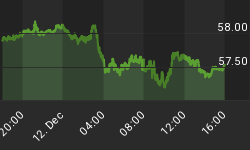The most important metallurgical coal basin in the world is underwater. Open pits have become lakes, stockpiles are soaked, and rail lines are submerged and in places destroyed. Damage is estimated at $5 to $6 billion.
Australia accounts for almost two-thirds of global coking coal production. Much of it comes from Queensland, where an area the size of France and Germany combined is underwater. That includes the Bowen Basin coal region, which produces almost a third of the world's coking coal. The Bowen Basin was hit with 350 mm of rain in December, against an average of 102 mm.
Floods are now receding from the Bowen, giving some miners an opportunity to ship from existing stockpiles. Other mines are still inaccessible, and several rail lines are still submerged or damaged. And since open pits are still flooded and will take weeks to drain, shipping from stockpiles only postpones the inevitable: a reduction in met coal supply. Analysts think a recovery to pre-flood coal production levels will take at least three months.
At least six major global coal miners have declared force majeure, which means they can miss contractual shipments because of circumstances out of their control. The list includes Anglo American, Aquila Resources, BHP Billiton, Macarthur Coal, Rio Tinto, Vale, and Xstrata. Mines responsible for between 100 and 140 million tons of annual coking coal production are now under force majeure, representing as much as 40% of global supply.
And it's probably not over yet. Australia's Bureau of Meteorology predicts both eastern New South Wales and southeastern Queensland have a 60% to 70% chance of receiving higher-than-average rainfalls between January and March 2011.
What does it mean for coal prices and coal equities?
First, coal is not traded daily, like copper or gold. Coking coal prices are set in quarterly negotiations between steelmakers and coal miners; contracts for the first quarter of 2011 were mostly settled before the floods, at an average of $225 per ton (already the second highest level ever). So prices have not changed yet, but there is lots of talk about where they will go next. Analyst predictions for the second quarter range from $250 to $350 per ton.
Coking coal producers not affected by the floods are already reflecting the increase, and that will likely continue. Teck Resources, for example, climbed from below $59 to almost $63 in the last days of December, before slipping with the markets. Western Coal and Grande Cache Coal also made gains. The longer-term impact will of course depend on how long it takes for Australia's mines to return to normal operations, but in general the situation supports Casey's bullish stance on coking coal: there is not a lot of supply, and demand is constant, if not rising, so prices can only trend up.
Casey's support for coking coal has already generated big returns on at least one recommendation. Some ten months ago, I was on Business News Network (BNN) talking about met coal and recommended Cline Mining at just over $1. Those who traded on that advice are now looking at a 300%+ gain, as Cline is currently trading at more than $4, in less than four months. And Casey's Energy Report recently added a new metallurgical near-term coal producer to its portfolio.
As for thermal coal, prices seem poised to edge up slightly because of the floods but, unlike metallurgical coal, there is plenty of thermal coal to go around. The situation has disrupted just 8% of global thermal supply. So while the floods may be causing a pop in thermal coal equities, the increase is unsustainable. There are thermal coal deposits all over the world, and many countries produce enough to meet most of their energy needs. China's thermal coal stockpiles remain very healthy, for example, and it is the second-largest importer of thermal coal in the world. The top importer is Japan, but even it only imports some 113 million tonnes annually and relies on coal for less than 30% of its electricity needs.
As such, the pop in thermal coal equities is not going to last. Hence, investors should use the lift as an opportunity to reduce their positions.
The floods are also a reminder of the extremes of Australian weather - a prolonged drought in Queensland ended just two weeks before the torrential rains began. And while the rains pound Queensland and New South Wales, which cover the eastern third of the country, searing temperatures have residents of neighboring South Australia and Victoria on alert for bushfires. That is simply a reminder that Australia's weather can often impact the country's all-important met coal mines.
No one is more knowledgeable in the volatile energy market than Marin Katusa and his team. That's how subscribers could rake in an exceptional 818% gain on Uranium Energy (UEC) in only 24 months. Subscribe today and get Casey's Energy Report for 30% off the regular price - plus one year of Casey's Extraordinary Technology FREE. Find out more here.
















